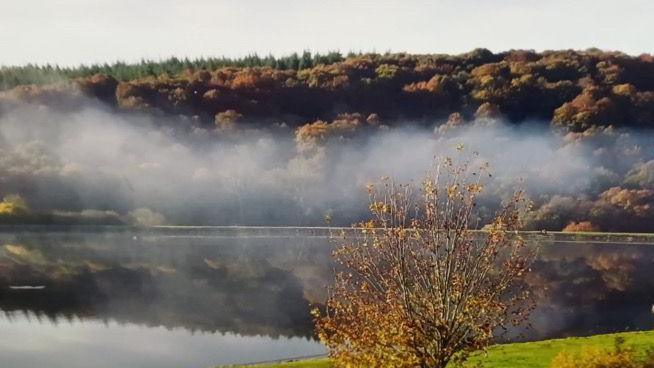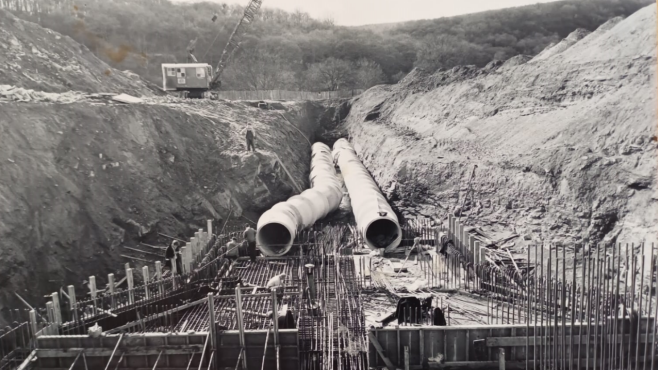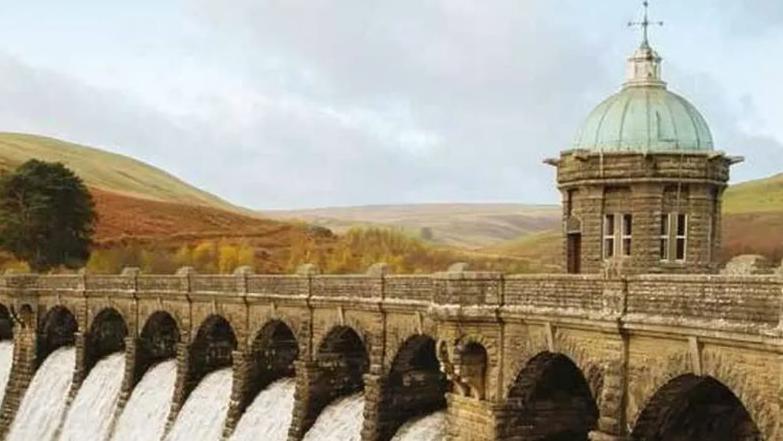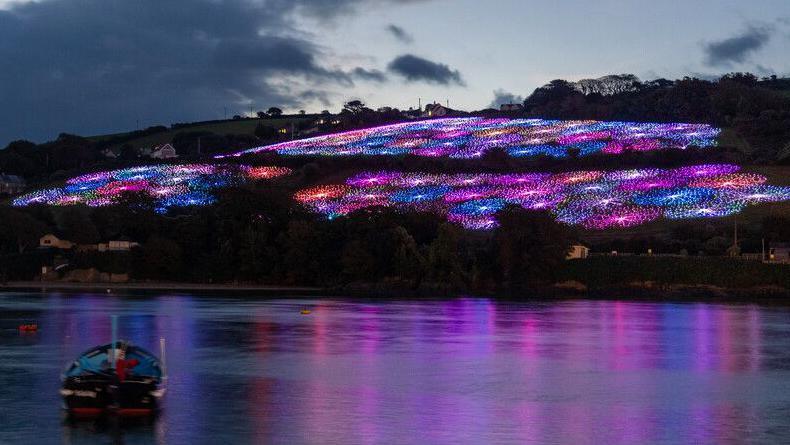The reservoir that was in the movies turns 60

Trimpley Reservoir - a 29-acre site - enables the treatment and supply of water to England and Wales
- Published
A key part of creating a constant supply of clean water to England and Wales has reached its 60th birthday and it is still going strong.
In 1964, the first spade went into the ground as four years of Trimpley Reservoir's construction got under way, next to the River Severn, near Bewdley, Worcestershire.
Joe Upsall, from Severn Trent which now manages it, said water from the 29-acre reservoir "gets pumped a long way, providing water to Shropshire, the heart of Worcestershire and to Birmingham."
Besides those supplies it is also home to a sailing club, attracts anglers and birdwatchers, as well as providing a backdrop for a host of popular movies.
Listen on Sounds: Take an exclusive tour of the man-made lake and "hidden treasure" of the River Severn
Directors who have taken advantage of the location, include Don Sharp when he was making the 1978 version of The Thirty-Nine Steps, which starred the likes of Robert Powell, John Mills and Timothy West.
It would be used again two years later, as David Lynch shot The Elephant Man, which starred John Hurt, Sir Anthony Hopkins and Anne Bancroft.
If you go beneath the reservoir's surface, there is a labyrinth of pipes to be found, through which River Severns supplies feed into the Elan Valley Aqueduct near Rhayader, which runs for 73 miles (117km) all the way to Birmingham.

Trimpley Reservoir was built between 1964 and 1968 to supplement the Elan Valley pipeline

Trimpley Reservoir also supplies water to the Elan Valley Aqueduct, which is 73 miles (117km) long, to enable transportation of the wet stuff all the way to Birmingham
The reservoir was finally completed in 1968, after crews dug up the land, laid huge concrete foundations, built towers, and installed huge pipes, which run 40ft (12.1m) deep.
Jude Burditt, Severn Trent's customer solutions director, said the underground works remained "absolutely critical" because they enable the connection of the reservoir to the network.
"We're gonna need water here, we know that it is strategically located by the Severn," she said.
"We're going to continue to invest and make sure that we're delivering great water quality.
Get in touch
Tell us which stories we should cover in Hereford & Worcester
Follow BBC Hereford & Worcester on BBC Sounds, Facebook, external, X, external and Instagram, external.
Related topics
- Published11 June 2023

- Published6 October 2024
